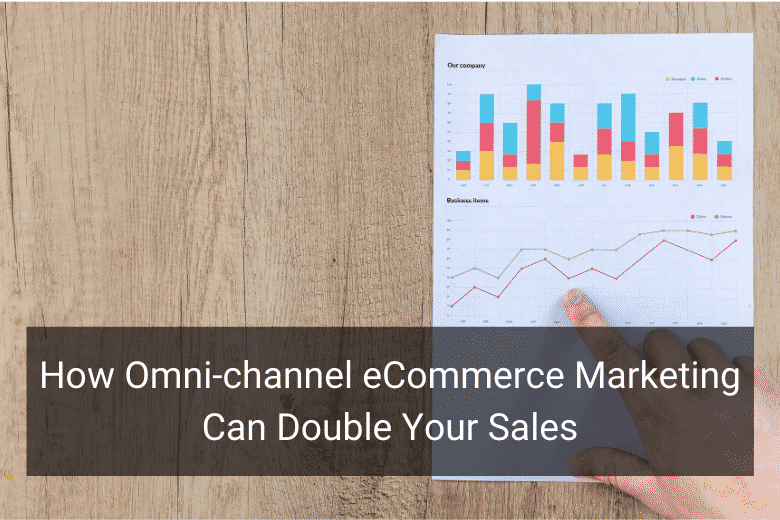One of the buzzwords you hear a lot nowadays is Omni-channel. eCommerce marketing services that use an Omni-channel approach align their goals, messaging, and objectives across all devices and channels. It’s the consumer behavior evolution.
What is the Omni-channel idea?
The idea is utilizing all the channels to craft a unified, single experience for the customer base. This includes both digital and traditional channels, online experience, point-of-sale and in-store.
The Omni-channel marketing builds seamless message that will adjust to the customer, based on their behavior, via the sales funnel, which provide a personalized, ultimate customer experience. Nowadays, an eCommerce marketing company wants to build an online presence using the best eCommerce platforms, which include Magento. The Magento marketplace is abound with service providers who could deliver the right services and products.
The Importance of Omni-channel eCommerce
Omni-channel buyers should be the priority of an online store, since it’s been found that those who purchase in-store and online have a higher 30 percent lifetime value compared to those who use only a single channel.
Once again, the convenience is the key influencing factor. A company that values their time is the most critical component of providing quality service to customers. The marketing strategy delivers freedom to find products and purchase anytime, anywhere. They could check status of their orders, availability of a product at any store. Put simply, they have control over the customer experience, based on their preferences, needs, and schedule.
Technology is the Key
The key component to an Omni-channel experience is technology. Any improvements to the use of it in the shopping process would only grow more. This includes retail applications and integration of mobile devices. An eCommerce marketing company provides business solutions that integrate a mobile experience for more productivity.
Today, customers use mobile apps to browse for items and eventually make a purchase. The time on desktops are getting less as more people are now engaging in their mobile devices to browse and to shop. This keeps brand loyalty, as well as keep customers within the branded environment, not outside where they could come across other brands selling the same product.
Omni-channel eCommerce Marketing Strategies
Strategy No. 1. Be global, but act local with a localized content technique. If your site serves and ships the international market, this is the best strategy. There’s no better way than to boost the confidence of local visitors, instead of having the website to be served in their local currency and language.
Nonetheless, if you want site visitors to experience a whole Omni-channel experience, the site should be more than just a simple translated version of the English-version website that’s hosted in another country-centered directory. Visitors should feel local even if they are interacting with a worldwide company.
Strategy No. 2. Do not let the mobile website become the Achilles heel. In large, the strategy is driven by mobile devices. There’s only one issue though, and that is the great majority of mobile websites till lag behind the bulkier, larger desktops. This undermines any Omni-channel eCommerce marketing effort completely.
To provide a great user experience, consider the important stuff to be front-and-center on the small mobile screens, with secondary elements underneath. Mobile speed is another issue. Google announced recently of new benchmarks to speed mobile pages.
Strategy No. 3. Discounts are not dead, so use them effectively. Often, coupons are what convinces a visitor to buy. Almost 80 percent surveyed stated that digital coupons ‘close the deal’ when they’re not sure on a purchase. Some examples of discounts include multi-buy offers that provide customers numerous products for a lesser price when bought together compared to separately purchased.
Another example is the volume-based discounts. Shoppers get to receive more amounts off and percentages when purchasing a specific product threshold. Consider the ‘buy more, save more’ model, that prompts more product movement at a lower price for every piece.
Strategy No. 4. Build a recognizable brand voice. Products promotion for online shops could be started solely over social media. As the brand expands, it could include a physical presence to round out the entire Omni-channel experience. The expansion is critical for business growth.
Engage the audience in a direct, relatable way by creating a character, which serves as the brand voice. This style and voice are present in each aspect of the branding of the company. It’s what distinguishes the brand from other similar businesses. Focusing on the way you talk to customers help create brand recognition and loyalty, over and above a well-designed logo.
Strategy No. 5. Build a movement through making a stand for something. Businesses that are purpose-driven are growing. Furthermore, they’re moving the economic needle as creation often comes from the need to give back to boost the lives of other people.
These kinds of brands appeal to the goodwill and hearts of customers, and reap the rewards later. A study revealed that 47 percent of customers make a purchase at least a month from businesses that support a cause, and 72 percent would recommend the product or the brand over one that does not support any cause.
Strategy No. 6. Make guides for product category-level purchasing. Make much fresher content with guides, which could be broken down or segregated into a customer-based, seasonal information. Seasonal buying guides, in contrast to long blog-style and less frequent posts would bring customers back much more often to see what’s available and what’s new.
Making guides seasonal and offer more customer incentives for them to buy. Moreover, the lead magnet guides take away the stress of consumers, perfect for loyal customers to feel more comfortable on a product.
Summary
The Omni-channel eCommerce marketing isn’t a technique, a tip, and note even a trend, but it’s an evolution. It’s all about the gathering of various factors to advance the expectations of consumers on how to shop. It’s not very easy to execute though, so it requires more coordination, collaboration and simplifying services.
However, the extra works pays off, and provides a better consumer experience. Best of all, there are more opportunities for retailer growth. These days, eCommerce businesses could reach more people, much easier and faster than ever before.
Author
Henrik Adams is an experienced Magento Developer, who worked with one of the leading Magento Development Company in India – Sparsh Technologies. He likes to write about eCommerce development, web development, marketing, sales, and more about current trends. Check out his writing on Sparsh Technologies Blog.

Ready To Upgrade Your Logistic Solution?
Speak to Floship ecommerce logistic consultant about improving your global support chain today




